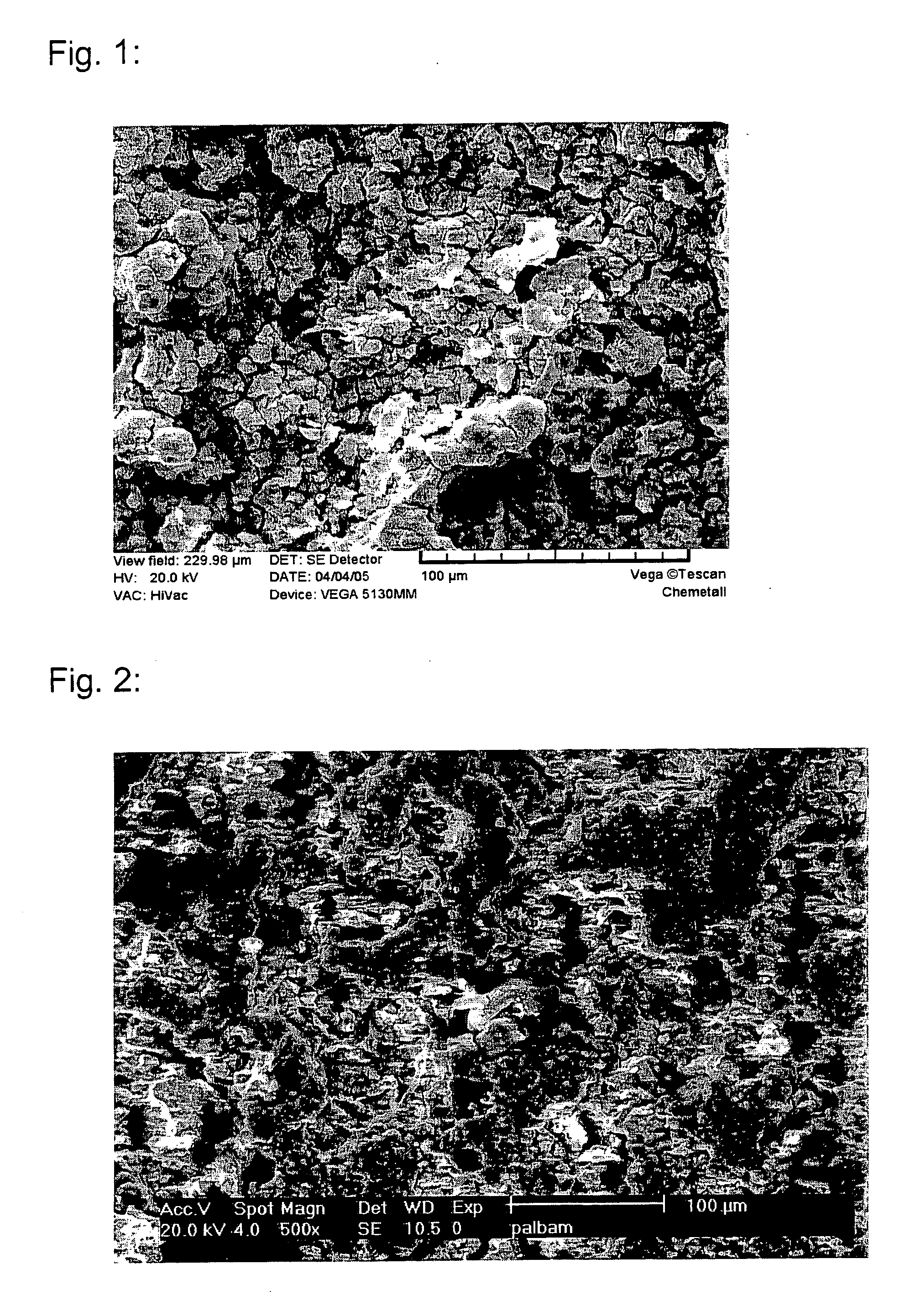Process for forming a well visible non-chromate conversion coating for magnesium and magnesium alloys
a non-chromate conversion and magnesium alloy technology, applied in the field of metal surface protection, can solve the problems of high sensitivity rapid corrosion of magnesium rich surfaces, and high corrosion resistance of magnesium and magnesium alloys, and achieve the effect of increasing corrosion resistance and adhesion of magnesium
- Summary
- Abstract
- Description
- Claims
- Application Information
AI Technical Summary
Benefits of technology
Problems solved by technology
Method used
Image
Examples
example 2
Corrosion Resistance and Paint Adhesion with an e-coat
[0148] Three dye-cast panels each of AZ91 magnesium alloy were cleaned in Gardoclean® S5192 available from Chemetall GmbH. These specimens were then coated in a process solution of the present invention having the composition of process solution 2 as described in Table 1 for 5 minutes, thereby generating non-chromate conversion coatings of 20 to 25 μm thickness and of a dark grey color with changing grey shadows and a mat non-metallic appearance. The surfaces of these coatings were very even and showed a certain microroughness, but were a bit less homogeneous probably because the material of the substrate was not as homogeneous. The such coated specimens were then painted with an electrocoating paint (e-coat) Cathoguard 400 of BASF generating a paint thickness of about 30 μm. Astonishingly, these specimens showed an unusually homogeneous and fine appearance of the e-coat which is normally very difficult to reach for magnesium al...
examples 3 and 4
, Comparison Example 3
Corrosion Resistance After Coating with a PTFE Coating and for Example 4 Additionally with a Silane Based Sealing
[0151] Three sets of dye-cast panels of AZ91 magnesium alloy were cleaned in Gardoclean® S5192 available from Chemetall GmbH.
[0152] The first three specimens (Comparison Example 3) were then treated at about 58° C. with a commercial aqueous amorphous Fe2+ and alkali metal ions containing phosphate solution of a pH of about 3.6 available from AMZA Ltd. thereby generating alkali metal phosphate coatings of about 1 μm thickness and of a bluish to grey color, but they did not show a microroughness.
[0153] The six other specimens (Examples 3 and 4) were coated with the fresh process solution 2 according to Table 1. During the contacting time of 5 minutes, dark grey mat non-metallic coatings of 20 to 25 μm thickness were formed. The surfaces of these coatings were very even, a bit inhomogeneous and showed a microroughness that is helpful to improve the p...
examples 5 to 9
, Comparison Example 4
Bare Corrosion Resistance of Coated Magnesium Alloy AZ91
[0157] Three dye-cast panels each of AZ91 magnesium alloy were cleaned in Gardoclean® S5192 available from Chemetall GmbH. These specimens were then coated in a process solution of the present invention having a composition as described in Table 1 as process solutions 1 to 6 for 5 minutes each.
TABLE 1Composition and pH of the process solutions used and bare corrosion resultsExample / Comp. Ex.Ex. 5Ex. 6Ex. 7Cp. Ex. 4Ex. 8Ex. 9Process solution No.123456H2SIF6, g / l203530102535NH4OH, g / l4825———35KOH, g / l——40———Silane, g / l———2424—AIF3, g / l—1.963.921.96—3.92H3BO3, g / l—————9.8pH2.51.51.45.53.02.0Coating thickness, μm20 to 2520 to 2520 to 25about 1020 to 25Coating visibilitywell visiblewell visiblewell visibleinvisiblewell visiblewell visibleBare corrosion in %80-10080-10080-10040-601-2080-100
[0158] The silane added is an amino-functional trialkoxysilane that was not prehydrolyzed. With the process solutions of ...
PUM
| Property | Measurement | Unit |
|---|---|---|
| concentration | aaaaa | aaaaa |
| length | aaaaa | aaaaa |
| concentration | aaaaa | aaaaa |
Abstract
Description
Claims
Application Information
 Login to View More
Login to View More - R&D
- Intellectual Property
- Life Sciences
- Materials
- Tech Scout
- Unparalleled Data Quality
- Higher Quality Content
- 60% Fewer Hallucinations
Browse by: Latest US Patents, China's latest patents, Technical Efficacy Thesaurus, Application Domain, Technology Topic, Popular Technical Reports.
© 2025 PatSnap. All rights reserved.Legal|Privacy policy|Modern Slavery Act Transparency Statement|Sitemap|About US| Contact US: help@patsnap.com

